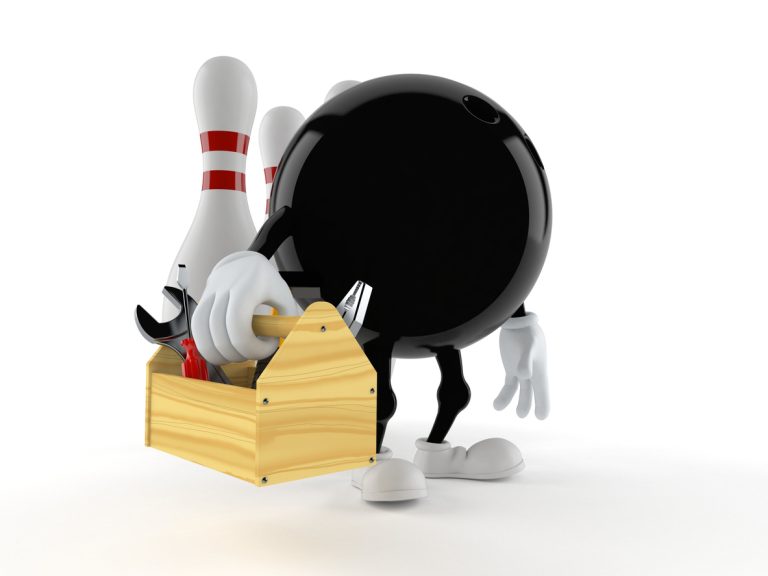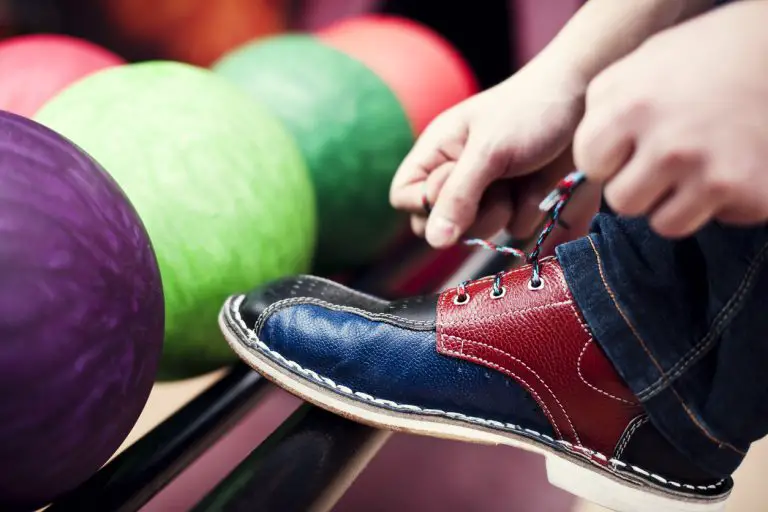Are Bowling Balls Flammable? Video Demonstration
Bowling balls are hard and dense objects made from several different materials. Although I’ve never tried to burn one on purpose, I’ve always wondered if they are flammable.
Bowling balls are flammable as long as they reach a high enough temperature. The different materials used in layers of bowling balls will have different melting points. Balls won’t explode or spontaneously combust, but placing one in a fire for awhile will eventually burn and/or melt the ball.
Burning a bowling ball poses some health risks. This article will discuss the essential details about a bowling ball’s flammability so you do not have to expose yourself to possible fire hazards.
Are Bowling Balls Flammable?
When you look at a bowling ball, it seems impossible to light it on fire. For one, it has a hard surface that looks unmeltable. The hardness of the ball, paired with its technological manufacturing process, makes many people think that bowling balls are not explosive.
But people fail to consider the materials used to manufacture bowling balls. A ball’s coverstock consists of either resin, polyester, or urethane. There are also synthetic bowling balls that consist of bowling balls.
Bowling Balls Are Combustible
Anything is flammable at the right thermal setting. While a small flame cannot light up a bowling ball on fire, leaving it on a large fire for hours will increase its temperature. Eventually, the materials that make up the bowling ball will melt and catch fire.
You need an extremely high temperature to light a bowling ball on fire. Bowling balls are combustible due to their coverstock.
A ball’s coverstock consists of either reactive resin, polyester, or urethane. These materials are all flammable. And since the coverstock is the outermost layer of a bowling ball, it will be the first part to catch fire. The coverstock’s fire will increase the internal temperature of the ball, causing it to crack before the entire ball ignites.
However, you can only ignite a bowling ball by placing it in a fire, such as a bonfire. So, while no one knows what temperature will ignite a bowling ball, it is clear that a common fire can do so.
Are Bowling Balls Toxic?
Bowling balls do not emit chemicals. Therefore, they are not toxic to one’s health as long as you do not burn them.
A bowling ball will create fumes once you light it on fire. The extreme temperature will cause the ball’s materials to melt, causing the burning ball to emit chemicals that are harmful once inhaled. While some fumes can cause no more than nose and throat irritation, chemical fumes can be toxic when inhaled.
For instance, a bowling ball can produce dense smoke once fire completely engulfs it. The smoke alone is a mere irritant. However, some manufacturers add calcium or iron oxide into the core of their bowling balls to help them harden. Once the fire reaches the ball’s core, it will create iron oxide fumes. Such chemical fumes can cause lung inflammation when inhaled.
What Happens If You Inhale Fumes From A Burning Bowling Ball?
Decreased Oxygen Supply
Everything you burn produces carbon monoxide, and a bowling ball is no exception. Accidental carbon monoxide inhalation decreases oxygen level in the body’s tissues, as it binds to red blood cells and displaces oxygen molecules in your blood stream. This can result in nausea, headaches, inability to focus and in extreme cases, death.
Your bowling ball may also emit fine particles when burning. If you inhale these particles, they will travel throughout your respiratory system and irritate your lungs. These fine particles cause shortness of breath, trigger asthma, and may worsen cardiovascular conditions.
Irritation
Smoke can cause immediate irritation to the nose, eyes, and throat. The foul smell it produces can also cause nausea. Inhaling heavy smoke can also make breathing difficult even days after inhalation. Even if you try burning your bowling ball in an open area, there is still a chance that you will breathe some of the smoke in.
Chemical Asphyxiation
Carbon monoxide is a significant gas produced when burning things on fire. Suppose you burn a bowling ball fire and accidentally inhale the smoke it makes. In that case, the carbon monoxide in the smoke will interfere with your blood cells’ oxygen carrying capacity.
Exposure to carbon monoxide for an extended period can cause permanent lung damage and death.
Chest Pain
When you accidentally breathe smoke in, and it reaches your lungs, it can cause coughing and chest pain.
Is Burning A Bowling Ball Toxic To The Environment?
Bowling balls consist of chemicals and plastic. When burned, the toxic fumes they produce harm one’s health and significantly contribute to air pollution. Even burning dry leaves and garbage is detrimental to the environment. A bowling ball causes it to produce:
- carbon dioxide
- carbon monoxide
- hydrocarbons
For this reason, we recommend that you avoid lighting your bowling ball on fire, no matter how curious you are about what it will look like. Watch the video above to see what a burning bowling ball looks like without risking your health and contributing to air pollution.
Will A Bowling Ball Crack When Expose To Heat?
Bowling ball manufacturers use technology to ensure their balls can withstand extreme conditions. They are also highly durable. But despite this fact, a bowling ball can only take so much. When conditions are too harsh, they may affect the physical condition of your bowling ball.
For instance, a bowling ball can develop cracks if exposed to high temperatures. However, you do not need fire and high temperatures to crack a bowling ball. Leaving it in a car or under the sun for an extended period can damage it.
Why Does A Bowling Ball Crack Due To Heat?
Exposing your bowling ball to heat will cause its external layer to increase temperature. A few minutes of heat exposure will not damage your ball. However, leaving it somewhere hot for an extended period will allow the heat to penetrate the ball. If this heat penetration happens, the ball’s temperature will constantly increase, causing pressure to build up in its core.
A slow but consistent rise in the ball’s temperature will only create tiny cracks. This damage will affect the ball’s performance, but not to the point that it will render it useless.
However, a quick rise in the ball’s temperature is a new issue. For instance, if you throw a ball in a bonfire, its temperature will rise rapidly. As a result, it will develop large and serious cracks beyond repair.
Is Storing A Bowling Ball In A Car Trunk Bad?
There is no doubt that fire can destroy your ball. However, you do not need that high of a temperature to cause damage to an expensive bowling ball.
Using high temperatures, one way to damage your ball is to leave it inside a car trunk. Your vehicle’s trunk reaches high temperatures, so making it a storage place for your ball exposes it to heat.
While a bowling ball is hard on the outside, its internal layers are sensitive to heat. It is why leaving your bowling ball in the car is a bad idea.
In addition, the temperature in your car increases and fluctuates depending on the weather. So, storing your bowling ball inside your car will cause it to contract and expand as temperature changes. Short exposure to changing temperatures will only cause the ball’s surface to expand and contract. But in the long run, your bowling ball will crack and be permanently damaged.
How To Properly Store A Bowling Ball
If a bowling ball is sensitive to heat, what is the right storage method to prevent damage from occurring?
The ideal storage condition for a bowling ball is room temperature. The storage place should not be too humid as it can cause the ball to swell, changing its performance. However, you also need to avoid storing the ball somewhere too dry. The reason is that the lack of enough humidity can dry out your ball and cause it to become brittle.
If your bowling ball’s storage area is too dry, install a humidifier to add a bit of moisture to the air. You can also store the ball in an air-conditioned room to prevent subjecting it to fluctuating temperatures. Here are the other things you need to avoid when storing your bowling ball:
- It is essential to avoid exposing your bowling ball to fire as its high temperature can warp the ball’s coverstock.
- Exposure to air can dry out the surface of your ball, so it is ideal for placing it in a Ziplock bag.
- Leaving the ball under direct sunlight can cause fading and cracking.
Read more in my 17 tips for bowling ball storage post.
Why Do Some People Put Bowling Balls In The Oven?
Fire and anything that can subject your bowling ball to high temperatures is bad. Not only will fire destroy your bowling ball, but it can also cause potential hazards. But what about those people who “bake” their bowling balls?
Some bowlers put their bowling balls inside an oven or a dishwasher. Their reason is to de-oil or “bleed the ball” as we’ve previously discussed. By placing the ball inside a preheated oven, the oil and gunk buildup on the coverstock’s pores will melt, making cleaning easier. However, professionals do not recommend this cleaning method.
True enough, heat is the fastest way to remove lane oil from the surface of your ball. However, putting a bowling ball in the oven will damage it and your appliance. You can even cause electrical and fire hazards if you are unlucky enough.
In addition, a bowling ball’s coverstock, filler, and weight block consist of entirely different materials. For this reason, they heat up and cool down at different rates. The difference in cooling rates separates the ball’s layer and thus destroys the ball.
Instead of baking your bowling ball, there are safer methods to clean and remove the oil from its surface:
Dish Soap And Warm Water
If your ball needs oil removal, one of the safest ways to do it at home is to use warm water and dish soap. Soak the ball for 30 minutes in your warm soapy water solution. The gentle heat from the water will be enough to dissolve the oil.
Additionally, dish soap is highly effective in removing oil from surfaces. After soaking the ball in your warm solution, rinse it with warm water and use an absorbent towel to dry the coverstock.
Finally, let the ball dry away from direct sunlight while moving it from time to time to distribute pressure.
Professional Bowling Ball Rejuvenation
The safest way to remove oil from the pores of your bowling ball is a bowling ball rejuvenator. Pro bowling shops usually have a ball rejuvenator. This tool works by removing grease and oil from your bowling ball without causing any damage to it.
How a ball rejuvenator cleans your bowling ball varies from brand to brand. For instance, the Revivor Oil Extraction Unit exposes your ball to low heat. The device forces heated air to rotate around the ball. This way, it can apply the heat evenly, preventing pressure from building up inside the ball.
Another example is the Ebonite Hook Again. This ball rejuvenator has a chamber that holds the bowling ball during a cleaning session. But instead of heated air, the Ebonite Hook Again uses a dry chemical solution to remove oil from the pores of a bowling ball. This rejuvenator is also available as a kit, allowing you to de-oil your bowling ball at home.
What Are The Benefits Of Bowling Ball Rejuvenation?
The primary benefit of bowling ball rejuvenation is it cleans off the oil, gunk, and dirt buildup on the surface of your ball. However, having your ball rejuvenated can do more benefits than simple cleaning:
Improves Your Bowling Ball’s Performance
A clean bowling ball coverstock will produce good traction against bowling lanes. As a result, you will be able to deliver the ball well, resulting in excellent shots. A bowling ball that does not have oil buildup will also allow you more control over your shots.
It Brings Back The Like-New Reaction Of Your Ball
Rejuvenating a bowling ball means restoring the quality of its surface. This maintenance method results in a like-new reaction during throws, making you feel like you are again playing with a new ball.
However, it is essential to note that bowling ball rejuvenation cannot remove scratches and chips from your ball’s surface. Such types of damage will need professional fixing more than a simple cleaning.
Preserves Your Bowling Ball For A Long Period
One way to keep your bowling ball in its prime condition is to clean it regularly. A regular cleaning schedule prevents dirt and oil from building up and clogging the surface of your ball. This way, dirt, and gunk will not affect how your ball performs during games. Cleaning your ball regularly will also increase its lifespan.
Summing Things Up
Everything is flammable, given the right temperature. So, if you expose your bowling ball to a large fire, it will eventually ignite and create fumes. Bowling balls will also crack when exposed to fire.
However, it is not ideal to light a bowling ball on fire for experimentation. The reason is that bowling balls contain chemicals that may produce fumes. These fumes can result in health hazards when inhaled. Fumes caused by igniting a bowling ball are also a major pollutant.
Moreover, even placing your bowling ball near a fire or high temperature can cause damage. Extreme temperatures can warp bowling balls and crack them beyond repair. If this issue happens, you will need to replace your bowling ball with a new one.







